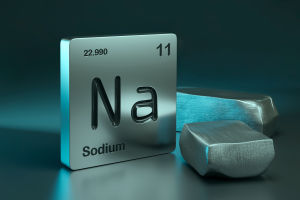Have you ever watched baking soda fizz when mixed with vinegar?
That bubbling reaction is a classic example of how acids and bases interact. This isn't just a kitchen experiment—it's a window into one of the most important types of chemical reactions in our world.
From cleaning products to your stomach's digestion process, acid-base interactions are everywhere. Let's break down the science behind it!
What Are Acids and Bases?
Before we dive into their interaction, we need to understand what acids and bases are. Acids are substances that release hydrogen ions (H⁺) in water. They usually taste sour and are found in lemon juice, vinegar, and even your stomach acid (hydrochloric acid). Bases, on the other hand, release hydroxide ions (OH⁻) in water. They tend to feel slippery and taste bitter—think of baking soda or soap.
The acidity or basicity of a substance is measured using the pH scale, which ranges from 0 to 14. Acids have a pH below 7, while bases have a pH above 7. A pH of 7 is neutral, like pure water.
The Role of Ions in Acid-Base Reactions
The interaction between acids and bases is essentially a reaction between ions. When an acid dissolves in water, it releases hydrogen ions (H⁺). A base, when dissolved, releases hydroxide ions (OH⁻). When these two ions meet, they combine to form water (H₂O). This neutralization process is the core of acid-base chemistry.
For example:
HCl (acid) + NaOH (base) → NaCl (salt) + H₂O (water)
This equation shows that an acid (hydrochloric acid) reacts with a base (sodium hydroxide) to produce salt and water. This is known as a neutralization reaction.
Neutralization Reactions in Everyday Life
Acid-base reactions are not just textbook material. They happen around you all the time. Here are a few examples:
• Antacid tablets: When your stomach produces too much acid, you might take an antacid (a base like magnesium hydroxide) to neutralize it.
• Soil treatment: If soil is too acidic for crops, farmers add lime (a basic compound) to balance the pH.
• Cleaning: Many cleaners are basic because they react with acidic stains or greasy messes to neutralize and remove them.
Strong vs. Weak Acids and Bases
Not all acids and bases are created equal. Strong acids (like hydrochloric acid) and strong bases (like sodium hydroxide) dissociate completely in water, meaning they release all their ions. Weak acids (like acetic acid in vinegar) and weak bases (like ammonia) only partially dissociate.
The strength of an acid or base affects how vigorously it reacts. A strong acid reacting with a strong base creates a rapid and exothermic (heat-releasing) reaction. Weaker pairs tend to react more gently and slowly.
How Indicators Help Us See the Reaction
You might have seen litmus paper change color in science class. That's because indicators are special substances that show whether a solution is acidic or basic by changing color. For example:
• Blue litmus paper turns red in acid.
• Red litmus paper turns blue in base.
• Phenolphthalein is colorless in acid and pink in base.
These indicators help us detect when a neutralization reaction is complete or to test the pH of unknown substances.
Acids and Bases in Biology
Our bodies depend on acid-base balance. Your blood must stay within a very narrow pH range (around 7.35–7.45). If it gets too acidic or too basic, it can cause serious health problems. The body uses buffering systems—special chemical systems that resist drastic pH changes—to maintain balance.
Stomach acid (a strong acid) helps digest food, while your pancreas releases a base called bicarbonate to neutralize the acid as it enters your intestines. These processes show how deeply acid-base interactions are involved in biology.
Industrial Uses of Acid-Base Chemistry
Factories and industries use acid-base reactions in countless ways:
• Water treatment: Neutralizing acidic or basic pollutants before water is released into the environment.
• Food processing: Adjusting pH to preserve food or improve flavor.
• Textile and paper production: Controlling pH during manufacturing ensures quality and prevents damage to materials.
Understanding how acids and bases interact is essential in many fields, from environmental science to engineering.
Safety and Handling
Because strong acids and bases can be corrosive, it's important to handle them with care. Always wear gloves and safety goggles in a lab or when using strong cleaning products at home. Even weak acids and bases can irritate skin or eyes, so precautions are necessary.
Conclusion: Chemistry in Action
Acids and bases may sound like complicated science, but they're part of everyday life—whether you're cooking, cleaning, or digesting food. Their interactions are fascinating and practical, and they show us just how active chemistry is all around us.
Next time you see fizzing bubbles from baking soda and vinegar, or taste the tang of lemon juice, remember: you're watching chemistry in action! Have you ever tried a simple acid-base experiment at home? If so, what did you discover? Let us know!


